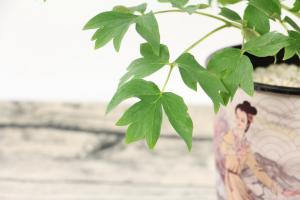How to Re-Color Your Plant Pot
Over time, even the most beautiful plant pots can become dull and faded, detracting from the beauty of your plants. Fortunately, re-coloring your plant pots is a simple DIY project that can breathe new life into your garden or indoor plants. In this article, we will discuss some tips and tricks to help you re-color your plant pot with ease.
Preparation
Before you begin re-coloring your plant pot, you will need to prepare the surface. First, clean your plant pot thoroughly with soap and water. This will remove any dirt, grime, or debris from the surface, ensuring that your new color adheres properly. After cleaning the pot, let it dry completely before moving on to the next step.
Next, you will need to sand the surface lightly. Use fine-grit sandpaper to lightly sand the pot's surface, creating a rough texture that will help the paint adhere. Once you have finished sanding, wipe the surface once more with a clean, dry cloth before moving on to the next step.
Choose the Right Paint
Choosing the right paint is essential if you want your color to last. Look for a high-quality paint that is designed for use on outdoor surfaces. If you are painting an indoor plant pot, a standard acrylic or latex paint should work well. When selecting a color, consider the decor in the room or the colors in your garden. You can either choose a color that complements these existing colors or go for a bold, contrasting color for a striking effect.
Applying the Paint
Now it's time to apply the paint. If you are using a spray paint, apply it in thin, even coats, holding the can about 8 inches away from the pot. Avoid spraying too much in one area, as this can cause drips or uneven spots. If you are using a brush, apply the paint with slow, even strokes, taking care to cover the surface completely. Allow the first coat to dry completely before applying a second coat. Depending on the type of paint you use, you may need to wait several hours or overnight before applying a second coat.
Finishing Touches
After your final coat of paint has dried, you can add some finishing touches to your plant pot. Consider adding a coat of clear, weather-resistant sealant to protect the paint from the elements if your plant pot will be used outdoors. You can also add decorative elements, such as stencils or decals, to personalize your plant pot further. Once you have finished decorating your pot, place it back in its desired location and enjoy its renewed beauty!
Conclusion
Re-coloring your plant pot is a fantastic way to refresh your garden or indoor plants. By following these simple steps, you can achieve a beautiful, long-lasting finish that will add a touch of color and personality to your home or garden. So, don't be afraid to get creative and experiment with different colors and techniques – the possibilities are endless!

 how many times do yo...
how many times do yo... how many planted tre...
how many planted tre... how many pine trees ...
how many pine trees ... how many pecan trees...
how many pecan trees... how many plants comp...
how many plants comp... how many plants can ...
how many plants can ... how many plants and ...
how many plants and ... how many pepper plan...
how many pepper plan...

































